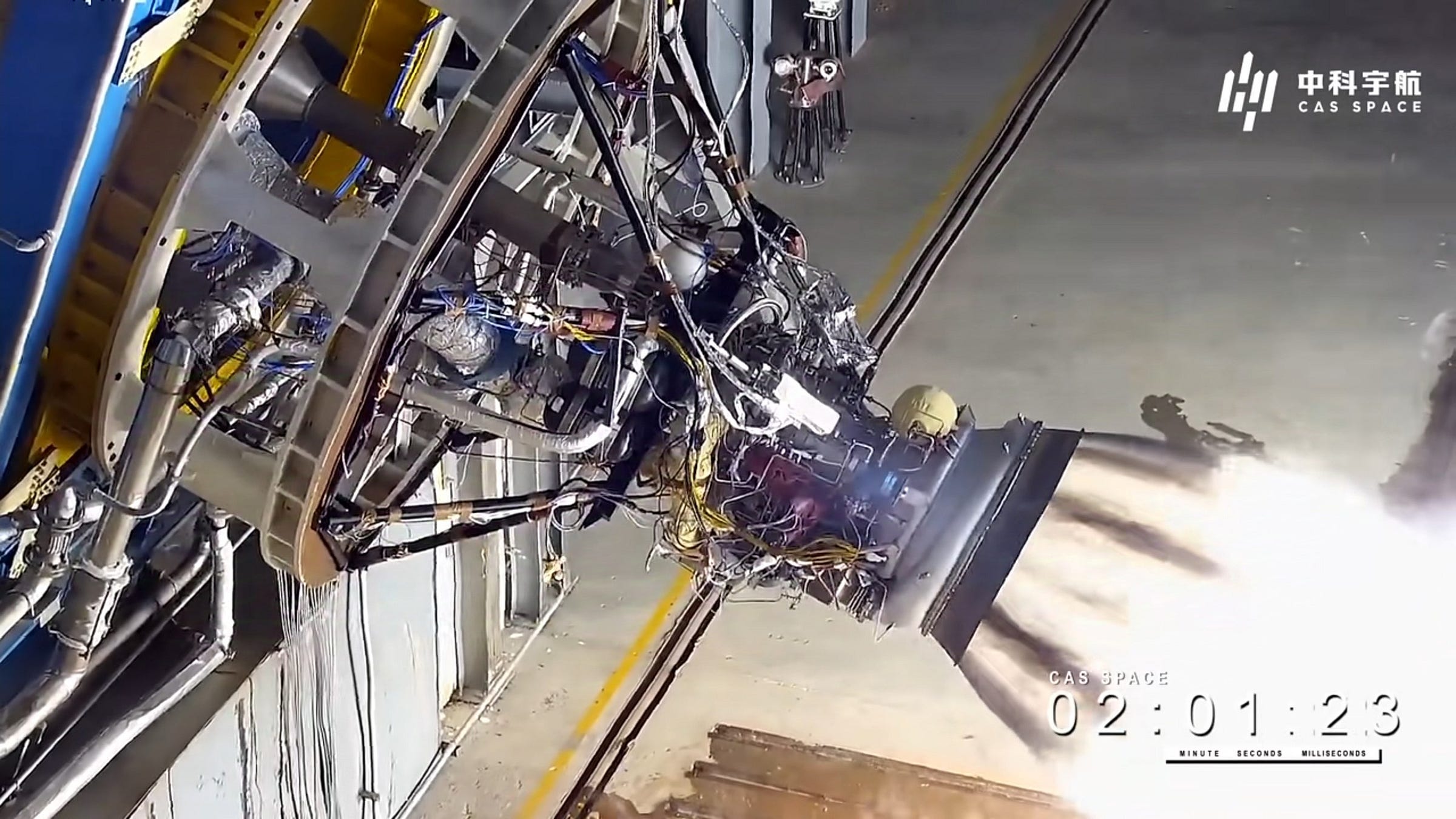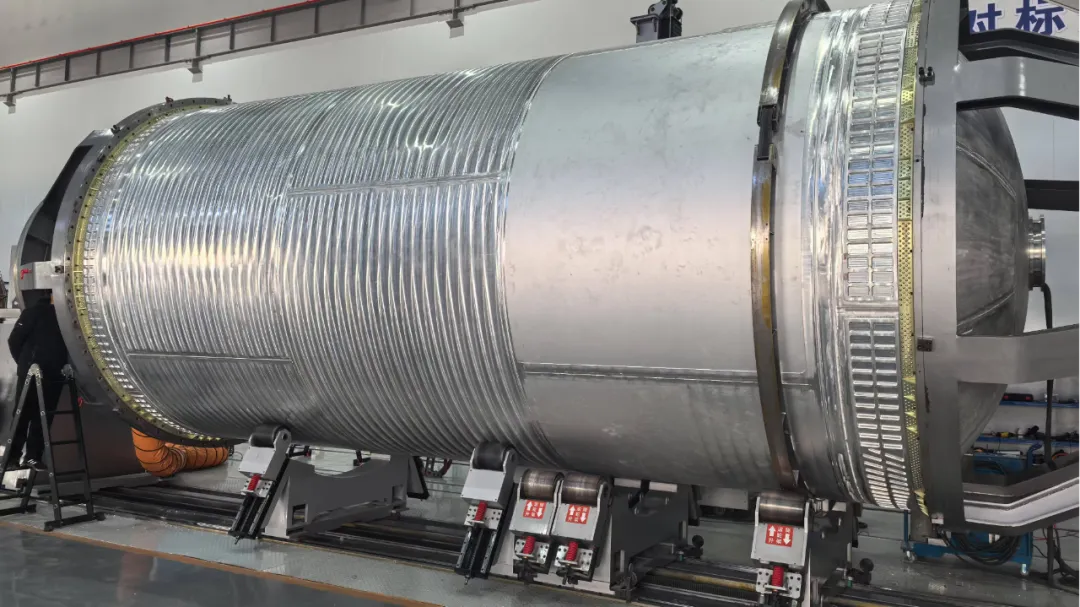LandSpace receives more funding, multiple reusable rocket engines tested
Three launch companies are testing engines ahead of 2025 debut flights while LandSpace receives more funding.
With a week to go before 2025, a few privately held launch companies are completing key engine tests ahead of planned debut flights next year. LandSpace has also received a few hundred million Yuan in support of its reusable rocket.
This post is also coincidentally releasing on Christmas Day, so Merry Christmas to all who are reading today!
CAS Space tests YF-102V
CAS Space announced on December 23rd that it had conducted a successful static fire of Kinetica-2’s second-stage engine, the YF-102V. This test had the engine ignite twice as well as testing performance while gimballing five degrees.
The two firings of the YF-102V totaled 600 seconds (10 minutes) with a ‘coast time’ between tests of 800 seconds (roughly 13 minutes and 20 seconds). According to CAS Space, post-test analysis confirmed that the engine was in good condition and its components had functioned normally along with demonstrating a relight of the engine.
As mentioned, the YF-102V engine will be used on Kinetica-2’s second-stage while burning rocket-grade kerosene and liquid oxygen to generate approximately 85 tons of thrust. Nine non-vacuum engines, the YF-102, will be used on Kinetica-2’s first-stage, with three engines on each core.
A little over a week ago, on December 17th, Kinetica-2’s second-stage rocket-grade kerosene tank also successfully passed a static load bearing test. This test confirmed that the tank could withstand higher loads than expected during flight.
Kinetica-2 is currently planned to fly its debut mission in September 2025.
iSpace fires JD-2 multiple times
iSpace announced on December 25th that from December 20th to 24th the company had conducted three firings of its liquid methane and liquid oxygen JD-2 engine. These tests were with the first production JD-2 engine according to the company.
The first test had the engine fire for 20 seconds at a ‘medium’ thrust level to confirm the coordination of various components. Post-test data indicated that the engine had fired stably and the performance as expected.
The second test fired the engine for 100 seconds between ‘medium’ and ‘low’ thrust levels to asses the engine performance while throttling between thrust levels. The third test also lasted 100 seconds and had the engine firing at ‘high’, ‘medium’, and ‘low’ thrust levels to verify the engine’s thrust range. iSpace said that the second and third tests had the JD-2 engine perform as expected across various thrust levels.
The first production JD-2 engines have also undergone mass savings according to the company with 25 kilograms saved in structural weight and 15 kilograms saved across various valves.
Ten JD-2 engines are expected to power iSpace’s reusable Hyperbola-3 launch vehicle, nine on the first-stage and one vacuum-optimized engine on the second-stage. Hyperbola-3 is currently expected to perform its debut mission in 2025 and recover a booster in 2026.
LandSpace receives 900 million Yuan
On December 25th a reporter for Securities Times (证券时报) was informed by LandSpace that the company had recently had 900 million Yuan, 123.3 million United States Dollars (as of December 25th), invested from China's National Manufacturing Transformation and Upgrading Fund. According to the Securities Times, this investment is the largest from a single entity into LandSpace. This new funding reportedly supports the development, testing, and production of a reusable rocket, which would be Zhuque-3.
The report in Securities Times also shared that LandSpace has so far produced eighty-three Tianque (天鹊), or TQ, rocket engines and test-fired them for almost 130,000 seconds. So far sixteen of these engines have been used in flight, fifteen for three Zhuque-2/2E missions and one for the Zhuque-3 VTVL test vehicle.
OrienSpace tests gas generator
Back on December 18th OrienSpace announced it had conducted the first test of its YuanLi-110 (原力-110), or Force-110, engine at a test facility in Tai'an (泰安市), in Shandong (山东). This test had YuanLi-110’s gas generator ignite seven times to verify the component’s vibration, reliability, and propellant injector.
According to OrienSpace, ten YuanLi-110 engines will be used on the company’s reusable Gravity-2 launch vehicle, nine engines will be on the first-stage with one vacuum-optimized engine on the second-stage. Each engine will burn rocket grade kerosene and liquid oxygen to generate 110 tons of thrust.
Following the test OrienSpace stated:
“The test run results show that the combustion efficiency of the gas generator is not less than 95% under the design, and the outlet gas temperature uniformity is high. After the test, the product is in good condition, and there is no erosion or damage to the components after disassembly, which is in line with the conditions for repeated use.”
If there are any problems with this translation please reach out and correct me.
OirenSpace’s Gravity-2 launch vehicle may fly in 2025 according to the company.




